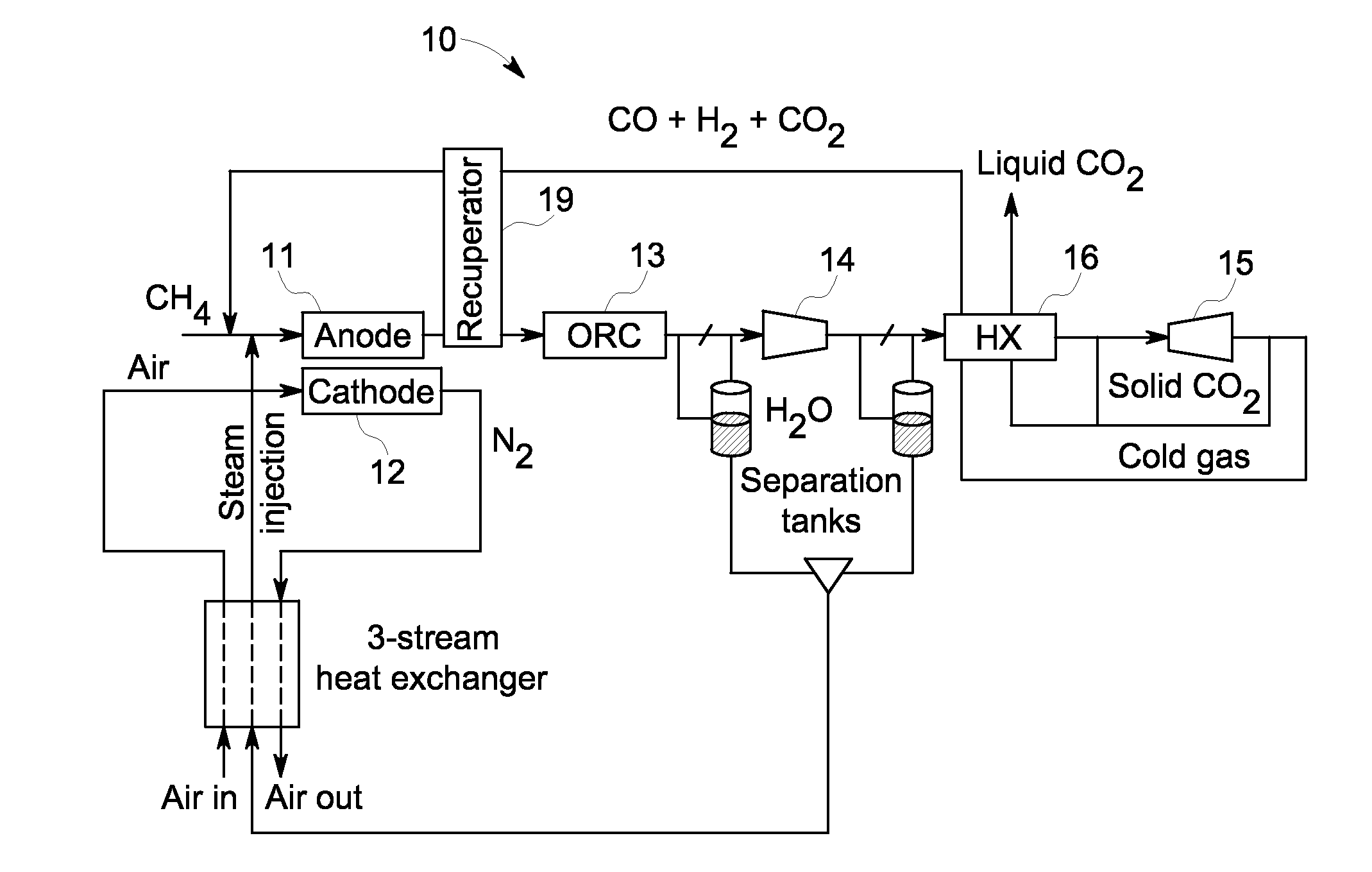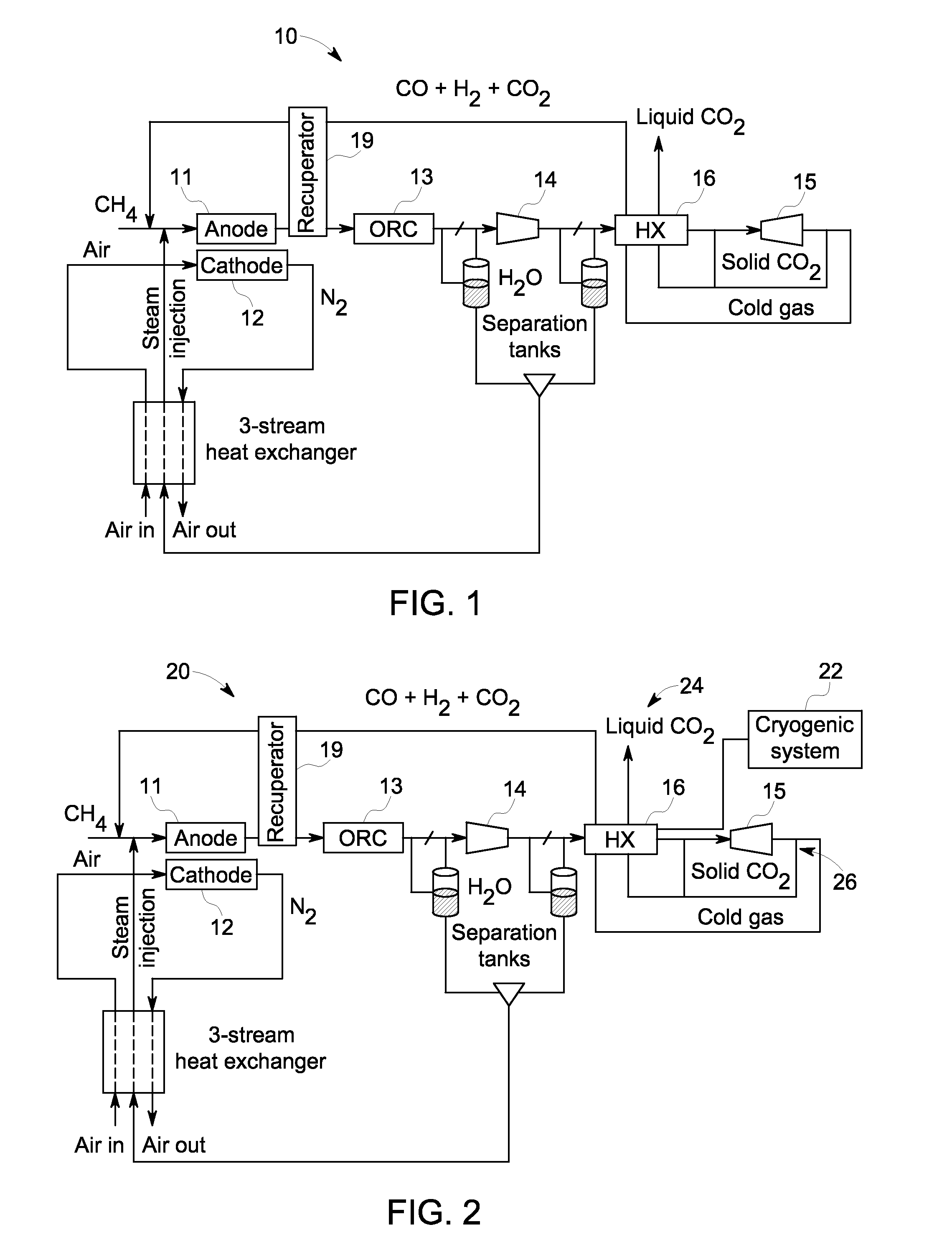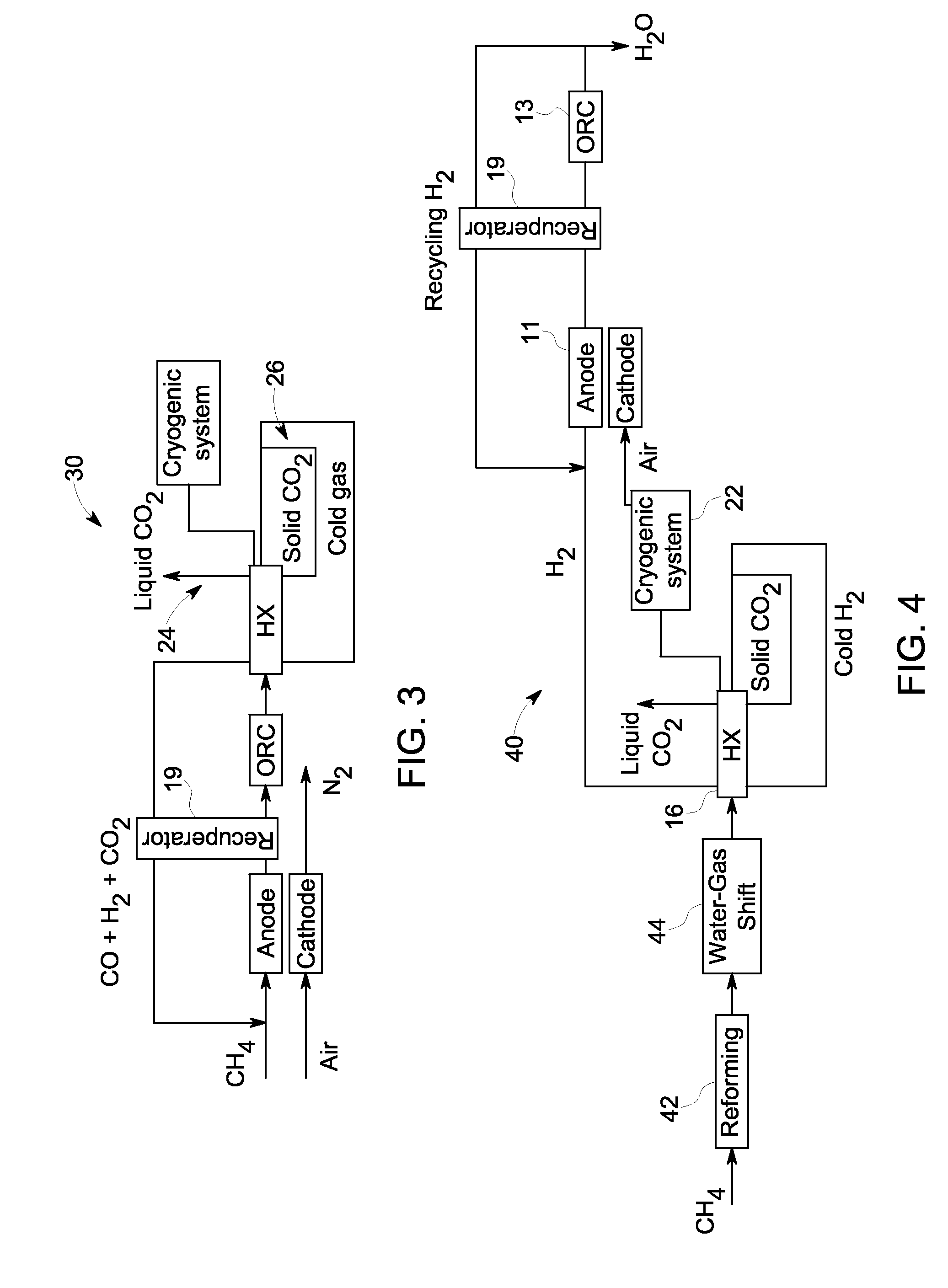Recirculation complex for increasing yield from fuel cell with co2 capture
a fuel cell and complex technology, applied in the field of solidoxide fuel cells, can solve the problems of fuel cell region near the inlet being particularly vulnerable to carbon formation, difficult to maintain a sufficiently high steam-to-carbon ratio in all, and possible reformation
- Summary
- Abstract
- Description
- Claims
- Application Information
AI Technical Summary
Benefits of technology
Problems solved by technology
Method used
Image
Examples
Embodiment Construction
[0043]The embodiments described herein with reference to the Figures advantageously provide increased SOFC efficiencies with simultaneous carbon capture features. Other embodiments of the present invention are also contemplated, as noted in the discussion. The principles described herein can just as easily be applied for example, to comparable fuel-cell technologies that are not strictly solid-oxide fuel cells. A vast variety of waste heat recovery cycles and methods for integrating those cycles are also possible using the principles described herein.
[0044]FIG. 1 is a simplified diagram illustrating a solid-oxide fuel cell (SOFC) recirculation complex 10 according to one embodiment. Recirculation complex 10 comprises an SOFC that includes an anode 11 and a cathode 12. Heat from the anode 11 exhaust drives a Rankine heat cycle referred to herein as Organic Rankine cycle (ORC) 13 to produce power. The ORC exhaust gas is applied to a compressor 14 that functions to compress the ORC exh...
PUM
 Login to View More
Login to View More Abstract
Description
Claims
Application Information
 Login to View More
Login to View More - R&D
- Intellectual Property
- Life Sciences
- Materials
- Tech Scout
- Unparalleled Data Quality
- Higher Quality Content
- 60% Fewer Hallucinations
Browse by: Latest US Patents, China's latest patents, Technical Efficacy Thesaurus, Application Domain, Technology Topic, Popular Technical Reports.
© 2025 PatSnap. All rights reserved.Legal|Privacy policy|Modern Slavery Act Transparency Statement|Sitemap|About US| Contact US: help@patsnap.com



